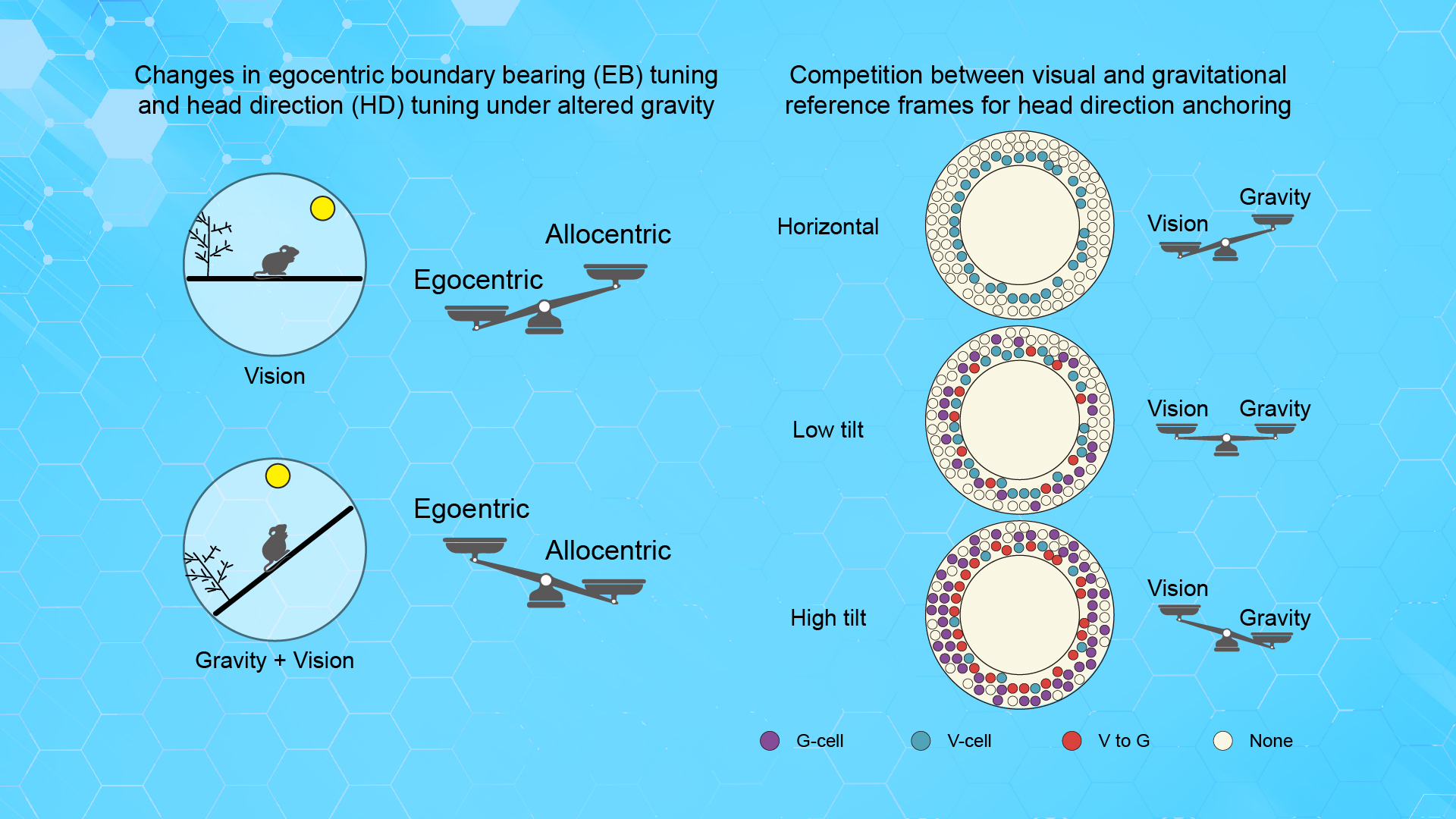Spatial navigation is a fundamental ability essential for animal survival and a critical research focus in the field of intelligent robotics. Since the late 20th century, studies have identified various types of neurons with specialized spatial encoding functions across multiple brain regions. These neurons collectively construct the neural foundation of spatial perception within the brain’s internal network by representing information such as the location and orientation of oneself and external objects in space.
Among these functions, the perception and encoding of spatial orientation are crucial for spatial cognition. The selection and organizational mechanisms of environmental reference frames have long been a core scientific question in this field. Depending on the frame of reference, spatial orientation encoding can be divided into two categories: one centered on the objective world (allocentric), which encodes the animal’s absolute orientation, and the other centered on the self (egocentric), which encodes the relative orientation of external objects.
For decades, research emphasized that “visual cues” played a dominant role in the reference system of spatial orientation encoding, particularly exerting a controlling influence over allocentric encoding networks. However, it has also been discovered that the brain’s perception and processing of “gravity cues” are a fundamental prerequisite for the normal functioning of this encoding system. Currently, the understanding of how gravity cues participate in and regulate this system after being perceived remains very limited.
The posterior parietal cortex (PPC) is a key brain region within a complex network involved in higher cognitive functions such as multisensory integration, spatial perception, and decision-making. It has direct or indirect bidirectional connections with core spatial encoding regions like the anterodorsal thalamic nucleus, hippocampus, and retrosplenial cortex, making it a critical hub for transforming egocentric encoding into allocentric encoding. Thus, the PPC is an ideal area for studying the mechanisms of spatial orientation encoding under different reference frames.

A research team led by Assistant Professor Xiaojing Chen from the School of Life Sciences at the Southern University of Science and Technology (SUSTech), in collaboration with Principal Investigator Cheng Wang’s team from the Institute of Brain Cognition and Brain Diseases at the Shenzhen Institutes of Advanced Technology, Chinese Academy of Sciences, has revealed the mechanism of gravity-anchored spatial orientation encoding.
Their paper, titled “Gravity-dependent choice of frame of reference in the posterior parietal cortex,” has been published in the journal Current Biology.
The research team utilized single-photon in vivo calcium imaging to track and record a large population of pyramidal neurons in the PPC of mice over several days under various spatial cue combinations. By tilting the behavioral arena to introduce gravity cues, they created a multi-transitional world ranging from a visual-cue-dominated horizontal space to a non-horizontal space where both gravity and visual cues coexist. By adjusting the relative strength and directional conflict between these two spatial cues, they investigated the dynamic encoding properties of the orientation system and the anchoring mechanisms of reference frames.
In the allocentric reference frame, the team found that gravity cues significantly enhanced the encoding of head direction cells (HDCs). In further experiments involving “gravity-visual” cue decoupling, single-cell and population-level analyses revealed that with the introduction of gravity cues, the PPC recruited more neurons into the head direction encoding network. These newly recruited cells often tuned their directionality based on gravity cues and were identified as gravity-anchored cells. Simultaneously, some previously recruited head direction cells switched from visual to gravity reference while maintaining their original directional tuning properties. This discovery indicates that gravity cues can serve as an independent reference compass to support head direction representation and engage in a complex “competition-cooperation” interaction with visual cues.
For egocentric coding of circumstance boundaries, the researchers observed that under visual-cue-only conditions, their encoding strength was significantly superior to that of allocentric head direction encoding. Egocentric boundary bearing dominated the spatial representation in the PPC. After introducing gravity cues, although the number of recruited egocentric boundary cells (EBCs) slightly decreased, their directional tuning strength and encoding consistency remained highly stable, demonstrating strong resistance to interference. Meanwhile, cells representing environmental landmark information were unaffected by gravity cues.
This indicates that while integrating new allocentric reference cues, the PPC can dynamically balance different reference frameworks based on the availability and relative weighting of multisensory cues, maintaining stable representations of other spatial frameworks such as the egocentric reference system. This reflects a remarkable capacity for multisensory integration and multi-reference framework encoding, which strongly supports the flexibility and stability of cognitive map formation.
Overall, the study systematically elucidates the organizational patterns and anchoring mechanisms of spatial orientation encoding under multiple reference frames using mice as a model organism. It demonstrates that gravity cues can serve as a reference frame driving head direction encoding and can dominate in competition with visual reference frames. The findings reveal the critical role of the PPC in integrating multisensory cues to construct spatial representations. This work provides key experimental evidence and a theoretical foundation for exploring the functional boundaries of the brain’s navigation system and the fundamental nature of its network structure.
Senior research fellow Junyu Zhao at SUSTech, master’s student Baishun An, and Assistant Researcher Ning Cheng at the Shenzhen Institute of Advanced Technology, Chinese Academy of Sciences, are co-first authors of this paper. Xiaojing Chen and Cheng Wang are co-corresponding authors, and SUSTech is the first affiliated institution.
Paper link: https://www.cell.com/current-biology/fulltext/S0960-9822(25)01114-5
To read all stories about SUSTech science, subscribe to the monthly SUSTech Newsletter.
Proofread ByAdrian Cremin, Yifei REN
Photo ByYan QIU